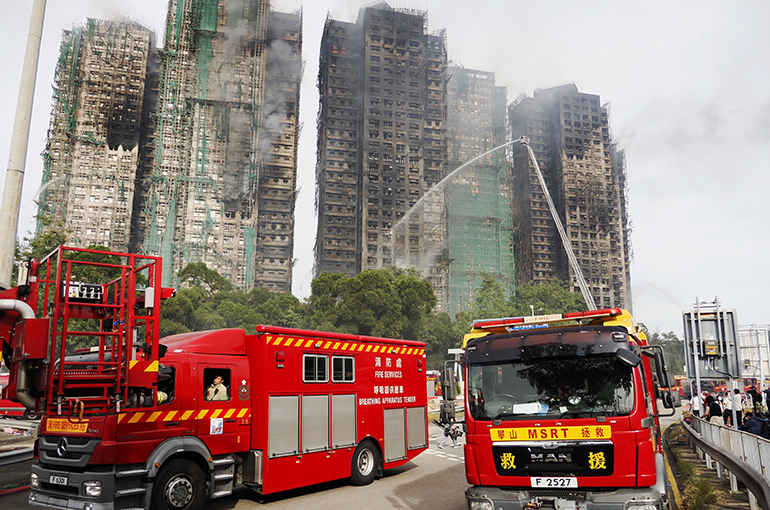 High-Rise Building Rescues Are a Challenge Globally, Experts Say After Deadly Hong Kong Fire
High-Rise Building Rescues Are a Challenge Globally, Experts Say After Deadly Hong Kong Fire(Yicai) Nov. 28 -- The deadly blaze that engulfed seven residential towers in Hong Kong this week illustrates the difficulty of high-rise building rescues worldwide, according to experts.
The death toll from the fire that broke out at a residential complex in Tai Po district on Nov. 26 has increased to 128, and may rise further, the Hong Kong government announced today. At least 79 people were injured and around 200 are still unaccounted for.
Built in 1983, Wang Fuk Court has eight 31-story apartment buildings. When the fire broke out, it was undergoing exterior wall repairs using flammable bamboo scaffolding and construction nets. The fire quickly spread up outer walls and eventually engulfed seven of the towers.
According to a police investigation, some of the materials used may not have met fire safety standards, accelerating the blaze’s spread.
Fire fighters’ ladders have height limits, usually around 50 meters, making it difficult to rescue people from buildings that are more than 18 floors high, Han Zhenxing, design director at Architecture Union Design Group, told Yicai.
Most fire trucks are designed for buildings that are less than 33 meters, or 11 stories, high, said a project manager at a real estate company in South China. They cost about CNY1 million (USD141,300) each, the person added.
To fight fires in buildings as high as 33 floors, a 101-meter ladder is needed, and the cost per vehicle is roughly CNY24 million (USD3.4 million). Such vehicles are scarce and for blazes in even taller buildings, helicopters are required.
The combustible materials used in high-rise buildings and their internal layouts allow fires to spread rapidly, making rescue efforts even more difficult, Han said. Apart from the bamboo scaffolding, green nets, and other materials used during the renovation work, Wang Fuk Court was still occupied, so flammable household items and even gas canisters that could fuel the flames were inside, he pointed out.
The narrow spaces between the buildings made it hard to contain the blaze, he said, adding that due to the housing complex’s age, the sprinkler system, water supply, and other facilities may have been less effective.
Construction industry professionals recommend comprehensive high-rise fire safety improvements, such as using non-combustible materials, creating fire separation zones, installing independent smoke-control systems and adequate fire-fighting equipment, and planning efficient evacuation routes.
Editor: Kim Taylor